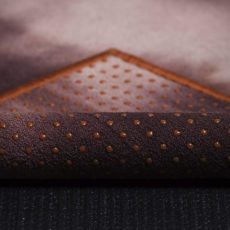As an Amazon Associate I earn from qualifying purchases.
The enormous popularity of yoga in recent decades established it as a global phenomenon. People of all ages and levels of physical fitness practice yoga to improve their health, reach peace of mind, and increase their consciousness and awareness.
However, some poses in yoga are not attainable by all practitioners. In modern days, there are many props that facilitate entering into postures (asanas) and allow everyone to achieve their best results in yoga. The yoga block is one of the most popular yoga props and here we walk you through the most important things you need to know about them.
How did yoga blocks come about?
One of the gurus that contributed the most to the popularity of yoga in the West is B. K. S. Iyengar. In his book “Light on Yoga”, he introduced the practice as a form of exercise with an emphasis on precision and alignment in the postures. To help his followers do asanas correctly, he used a number of props, such as yoga blocks, belts, and blankets to aid the performance of yoga poses and avoid injuries or unnecessary strain. Today, however, the use of blocks has become widely popular in a number of styles beyond Iyengar yoga.
What are yoga blocks exactly?
The yoga block is also referred to as yoga brick, as originally, it was intended to be of the same size as a house brick (approximately 23 x 12 x 7 cm). The great advantage of the cuboid shape of the block is that it can be used on its three sides (with different height) and thus provides support in a number of challenging postures. Nowadays, blocks vary in size, shape, and material.
How are yoga blocks used?
All yoga props are used to assist the practitioners to maintain correct body position in the asanas in a relaxed state. When your body has sufficient support, you get the opportunity to properly develop and deepen the pose as you progress in your practice. Thus, yoga bricks are used to facilitate your entering into an asana or alternatively, help you hold the asana longer.
Yoga blocks are used by beginners and by advanced practitioners. Additionally, they can be used by pregnant women, people with injuries, or by anyone who feels the need for further assistance in a posture. After all, your main task should be to relax and control your body in any asana. Here are four things yoga bricks can help you with:
Flexibility – yoga blocks can be used when you need more flexibility during twisting postures, forward bends, hip-opening postures, etc.
Balance – blocks can be used to essentially shorten the distance between your hand and the ground and thus help you enter into various balancing asanas. You can use a block for each hand or use a combination of several blocks, if necessary.
Support – yoga bricks can assist in positions where you need to extend your lower back or support your pelvis. If needed, you can use a block under your palms, knees, neck, or lower back during practice.
Comfort – even if you can reach a posture without any assistance, some yoga styles require you to maintain an asana for an extended period of time. This is another case where you can utilize yoga bricks. Of course, they can also be used during meditation or relaxation postures.
How would you know if you need a yoga block for a particular posture? Try to enter the asana first using the prop, and then do the same, but without the yoga block. Compare how you feel in both cases. Listen to your body, and you would be able to judge whether you currently need additional assistance or not.
What are yoga blocks made of?
As the use of blocks grew in popularity, so did the demand for manufacture. Today, yoga blocks are produced from various materials, so we’ve decided to walk you through the main options:
EVA Foam – The synthetic material has different degrees of density, affecting the softness the blocks (soft, medium and hard blocks are all made of foam). The soft foam brick is the softest possible option of all materials listed here. Additionally, foam blocks are lighter and come in a large variety of fun and fresh colors. Also, foam blocks are usually the most affordable option. Beware that to avoid discoloring and structure deterioration, you should keep your foam block out of prolonged exposure to direct sunlight.
Wood – natural wood blocks are made from both hardwood and softwood. However, in both cases, these are the heaviest option, providing the least comfort. Although they are very stable if wood blocks get wet, they can also be slippery. On the other hand, wood bricks provide excellent support and are very durable.
Bamboo – (yes, bamboo is not technically wood). Bamboo blocks are durable and reliable. Bamboo is regarded as the fastest-growing renewable material, making it a great option for environmentally conscious practitioners. Bamboo blocks are hollow and therefore lighter than wood blocks, however, they are traditionally more expensive.
Cork – cork blocks are produced of compressed natural cork. Due to the technology of production, cork bricks have high density and rigidity. This makes them quite hard and sometimes heavy.
Some manufacturers try to overcome this by using fine-grain, rather than coarse-grain cork material. The cork structure provides an easy and comfortable grip. The blocks are beautiful and durable, but can often be a higher-priced option.
To sum up, yoga blocks are a great prop to assist you in your yoga practice and can be used by practitioners of all levels. Your practice can benefit immensely from the support and comfort yoga bricks provide. There is a variety of blocks out there, and our most favorite picks are also available for sale in the blocks section of this website. Enjoy 🙂
Amazon and the Amazon logo are trademarks of Amazon.com, Inc, or its affiliates.



